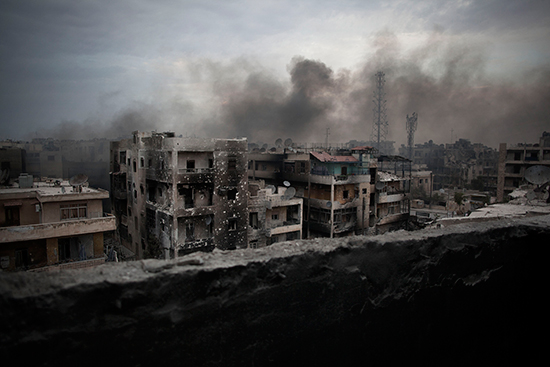New York, June 17, 2016 – Independent Syrian journalist Hadi Abdullah and cameraman Khaled Eissa were wounded by an improvised explosive device (IED) that destroyed their house in the Syrian city of Aleppo late Thursday night, according to media reports. Eissa is reported to be in critical condition.
The IED exploded at around midnight in front of Abdullah’s home, where he and Eissa were staying. Eissa was taken to a hospital where he is being treated for wounds to the head and abdomen. He is in a coma, according to reports.
Abdullah remained trapped beneath the rubble for a longer period. Members of the Syrian Civil Defense, a volunteer organization which is also known as the White Helmets, were able to remove him early Friday morning, and took him to the same hospital as Eissa, Kenan Rahmani, a Syrian-American lawyer close to both journalists, told CPJ. Abdullah has multiple fractures in his left leg, as well as an injury to one eye and to his jaw, Rahmani said.
Syrian activists and the pro-opposition website Orient.net described the attack as an assassination attempt. Abdullah has been outspoken against the Syrian government since protests against President Bashar al-Assad swept the country in 2011, and has reported from different cities in the country since then.
“Reports that Khaled Eissa and Hadi Abdullah may have been targeted because they are journalists are deeply distressing and underline the enormous risks Syrians are taking to do even the most basic reporting,” CPJ Deputy Executive Director Robert Mahoney said.
A post published on Abdullah’s Facebook page on his behalf today stated that he was in stable condition and expressed concern for Eissa, who is described as “still in a dangerous and critical state.”
Both journalists were injured by a barrel bomb on Tuesday while covering government airstrikes in Aleppo. An online video shows Abdullah immediately after the bombing. The next day, the journalists shared a photograph on social media of themselves back at work.
Abdullah and Eissa have been based in Aleppo to cover the conflict there for the past three months, according to Rahmani.
Abdullah and Eissa have been working together for more than a year. Turad al-Zahouri, a photographer Abdallah used to work closely with, died from injuries sustained while reporting in early 2014.
Syria has been the deadliest country for journalists since 2012, according to CPJ research. At least two journalists have been killed in direct relation to their work in Syria in 2016.
